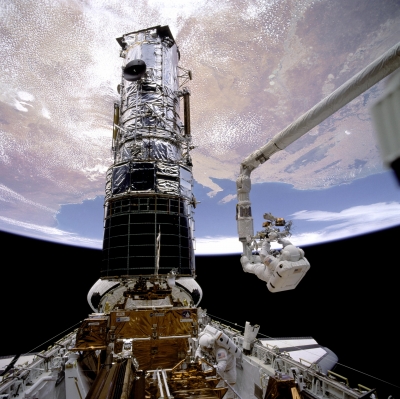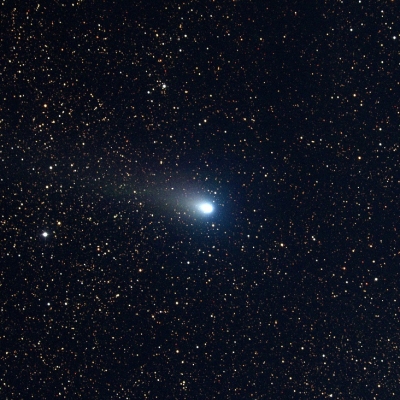What was the mission of the Hubble Space Telescope?

A mission conceived as one for preventive maintenance turned out to be more urgent after four of the six gyroscopes on board the Hubble space telescope failed.
The Hubble space telescope has changed our understanding of the universe A telescope that was launched into low Earth orbit in 1990, Hubble still remains operational and continues to be a vital research tool. Following NASA's most recent review of Hubble's operations, it has been announced that NASA would support the observatory through June 2026, with estimates suggesting that it might be able to continue operations until the mid-2030s and even beyond.
Designed to be visited
While the longevity of the telescope is testament to the vision of those who conceived the mission, there's another crucial factor that has made it possible. Hubble was the first telescope that was designed to be visited in space. This meant that astronauts could not only perform repairs and replace parts, but also upgrade its tech with newer instruments. There have been five such missions that have taken place from 1993 to 2009. One such servicing mission in December 1999 turned out to be a life saver for the telescope.
After the first servicing mission in 1993 and the second one in 1997, the third to carry out preventive repairs was scheduled for June 2000. Since Servicing Mission 2 in February 1997, however, three of the six gyroscopes aboard Hubble had failed. With at least three working gyroscopes necessary for Hubble's operation, it prompted the managers to split Servicing Mission 3 (SM3) into two parts, SM3A and SM3B, with the former scheduled for December 1999.
An unexpected failure
On November 13, 1999, a fourth gyroscope failed unexpectedly. With SM3A planned for the following month, this triggered NASA to place Hubble into safe mode. The safe mode was a sort of protective hibernation that prevented the telescope from making any observation. Hubble was in this state for over a month, waiting for the crew of SM3A to make their way.
With servicing mission veterans Steven Smith and Michael Foale at the helm, the seven-member crew aboard the Discovery Space Shuttle (STS-103) left for space on December 19. Within a couple of days, they manoeuvred close enough to Hubble such that it could be grappled with Discovery's robotic arm.
All six gyroscopes replaced
The first of the three scheduled spacewalks took place over 8 hours and 15 minutes spanning December 22-23 (Central European Time, CET). Smith, along with fellow crew member John Grunsfeld, managed to replace all six of Hubble's gyroscopes. The entire astronomical community heaved a collective sigh of relief on receiving this news. The duo also replaced kits to prevent Hubble's batteries from overcharging.
While Hubble's main computer was changed in the second spacewalk that spanned 8 hours 10 minutes through December 23-24 (CET), the final spacewalk spanning 8 hours 8 minutes through December 24-25 (CET) saw a faulty transmitter and data tape recorder being replaced. Preliminary tests were then conducted to ensure that all of Hubble's systems, be it old or new, were performing satisfactorily.
Backs away slowly
Minutes into December 26 (CET), the Hubble telescope was released. Discovery then backed away from Hubble slowly. Having successfully performed the major objectives of the mission, the astronauts on board used the time remaining to stow away equipment, apart from making preparations for landing.
After orbiting the Earth 119 times and travelling more than 5 million km, Discovery made its way back. It performed a smooth night-time landing, touching down on the runway at the Kennedy Space Center in the U.S. on December 27. Hubble was successfully back in operation, and has been for over two decades since then.
Picture Credit : google
